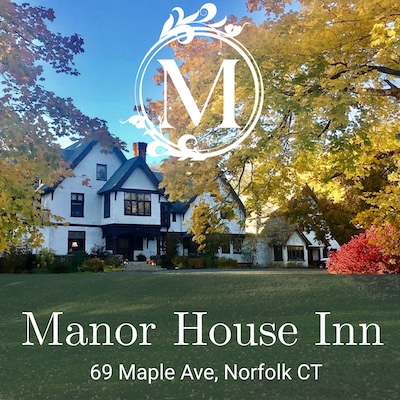April 12, 2021
Page Dickey and Francis Schell begin again
By Francis Schell
Six years ago, my wife Page Dickey and I moved from Westchester County, New York, to Connecticut’s Northwest Corner. At Duck Hill, our former home, Page, a garden designer and author, had spent over 30 years lovingly cultivating a three-acre garden of formal plantings that had achieved some renown, but which, with our advancing years, had become a burden. As much as it pained us, we needed to leave it behind.
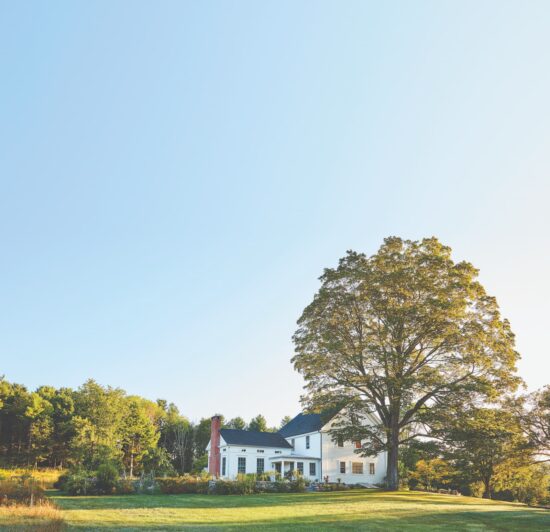
At Church House, as we named our new property centered around a 1793 Methodist meeting house in Falls Village, we were richly rewarded. An immense centennial sugar maple towers sentinel-like over our three-story building, perfectly sculpted ancient apple trees stand nearby, the tallest black cherry ever seen stands in solitude across the driveway. The site captivates us daily, with a view of Cobble Hill almost close enough to touch, the Berkshire Hills glimpsed above meadow and woods, and the huge open sky enveloping it all.
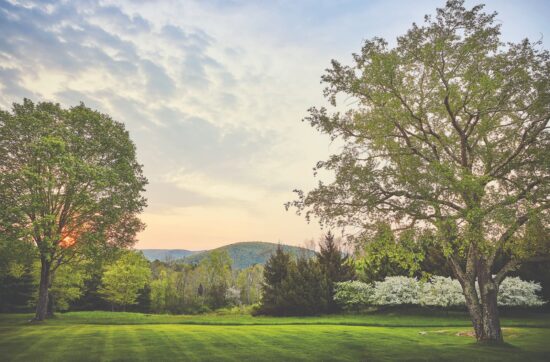
Duck Hill had been a garden of hedge-enclosed “rooms” with billowing boxwoods, perennial borders and plantings of exotic shrubs and trees. At Church House, man-made gardens are few. Page has “edited” with natives the long flower bed we found fronting the house, created a 30×30’ patterned cutting garden in the back, fenced with our local cedar, and added new varieties of hydrangea to the annabelles and tardivas massed near the swimming pool. We have added many spring bulbs, and have also built a small greenhouse. But, especially, we have embraced our 17 acres of woods and meadow.
For all its magnificent artifice, Duck Hill was imposed on the landscape. At Church House, as Page says in her book, Uprooted: “I wanted to listen to the land, discover its denizens, thrill to what it offers, nurture it—not make it into something else.”
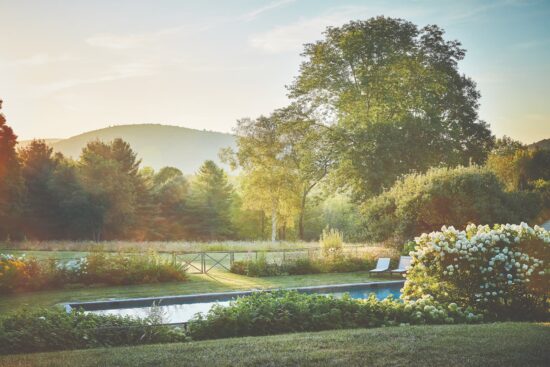
In the meadows extending in the front and back of the house, the native grasses—russet little bluestem, feathery Indian grass, and tall smoky purple love grass—are allowed to grow, and are mowed only once in the spring. In summer and fall, swaths of Queen Anne’s Lace, goldenrods, bergamot, black-eyed Susan, and Joe-Pye weed burst into flower and call to birds and butterflies. Winding paths, cut weekly through the tall grasses, tantalizingly beckon to the woodlands beyond.
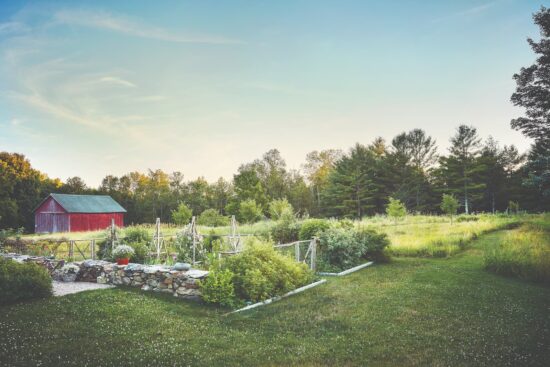
In what we call the High North Woods, Page has marked further paths along the steep outcroppings of limestone bluffs and massive stones covered with lichen that dot the forest floor. From spring into summer, these dry limey woods are alive with native columbines and bell flowers. The Low East Woods are moist, rich with aged white pines, shaggy-barked swamp oaks, fall-blooming witch hazel, and prickly ash—the northernmost American member of the citrus family. On the edge of these dense moist woods is our fen, a small calcareous wetland under a patch of open sky whose mineral-rich soil nourishes hundreds of native plants. Page has built a boardwalk to cross it, and in summer we walk through a carpet of wild asters that turns the fen blue.
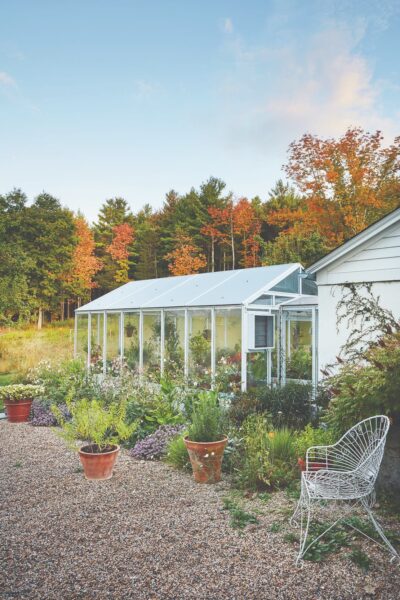
While leaving nature undisturbed, ridding our land of non-native invasives remains a constant battle. In the meadows spotted knapweed, mugwort, bedstraw, and multiflora rose are the villains. In our woodlands, we mercilessly cut down bush honeysuckle, European buckthorn and Oriental bittersweet that choke out the native undergrowth. We pile the debris into large bushy mounds that become habitat for birds and other forest creatures. Page writes, “This is as close as I’ll ever be in my lifetime to stewarding a piece of land in its wild state. And it has changed me as a gardener.”





















